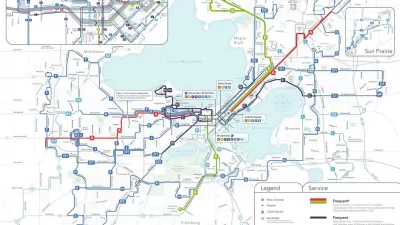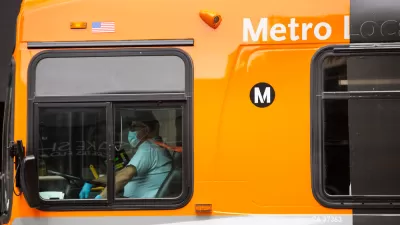So many aspects of a transit system's fare system can make or break the rider experience and even the long-term viability of the system. A new report helps transit planners and service designers make sense of all the options.
Fare policy has huge implications for transit riders, according to the impetus behind a new report by TransitCenter. "When transit agencies grapple with changes to fare prices, payment systems, and collection methods, they make decisions that affect affordability, convenience, and even travel time."
The new report, titled "A Fare Framework" [pdf] examines case studies of rider-friendly principles at the San Francisco MTA, TriMet in Portland, and King County Metro in Seattle.
"The paper also outlines recommendations related to broader trends within fare policy, like decriminalizing fare evasion and the adoption of mobile payment methods," according to the article that explains and promotes the report.
The article also comes with the explainer video on fare policy that can be viewed above.
FULL STORY: How Transit Agencies Are Getting Strategic About Fare Policy

Alabama: Trump Terminates Settlements for Black Communities Harmed By Raw Sewage
Trump deemed the landmark civil rights agreement “illegal DEI and environmental justice policy.”

Planetizen Federal Action Tracker
A weekly monitor of how Trump’s orders and actions are impacting planners and planning in America.

The 120 Year Old Tiny Home Villages That Sheltered San Francisco’s Earthquake Refugees
More than a century ago, San Francisco mobilized to house thousands of residents displaced by the 1906 earthquake. Could their strategy offer a model for the present?

In Both Crashes and Crime, Public Transportation is Far Safer than Driving
Contrary to popular assumptions, public transportation has far lower crash and crime rates than automobile travel. For safer communities, improve and encourage transit travel.

Report: Zoning Reforms Should Complement Nashville’s Ambitious Transit Plan
Without reform, restrictive zoning codes will limit the impact of the city’s planned transit expansion and could exclude some of the residents who depend on transit the most.

Judge Orders Release of Frozen IRA, IIJA Funding
The decision is a victory for environmental groups who charged that freezing funds for critical infrastructure and disaster response programs caused “real and irreparable harm” to communities.
Urban Design for Planners 1: Software Tools
This six-course series explores essential urban design concepts using open source software and equips planners with the tools they need to participate fully in the urban design process.
Planning for Universal Design
Learn the tools for implementing Universal Design in planning regulations.
Clanton & Associates, Inc.
Jessamine County Fiscal Court
Institute for Housing and Urban Development Studies (IHS)
City of Grandview
Harvard GSD Executive Education
Toledo-Lucas County Plan Commissions
Salt Lake City
NYU Wagner Graduate School of Public Service





























